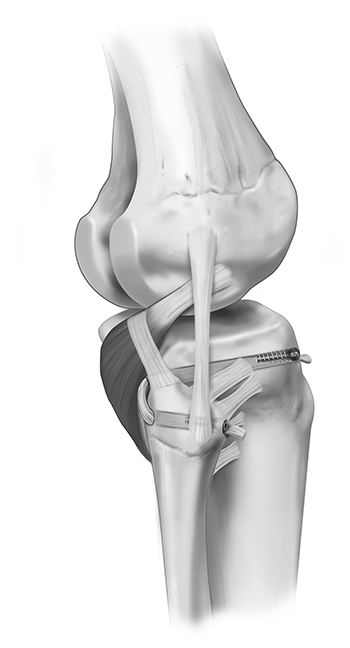Tibiofibular Joint Instability Surgical Treatment
What are the surgical options for a tibial plateau fracture?
Surgical intervention is often necessary for more severe proximal tibiofibular joint instability cases stabilize the joint. If surgery is needed, it is best to proceed as soon as possible following the injury. The specific surgical approach depends on the characteristics of the injury (anterior vs posterior or both).
Dr. Chahla and other researchers have developed techniques to restore stability to this joint without over constraining the joint. In the past, while others have often treated this instability of this joint by fusing it, we have reported through research that a proximal posterior tibiofibular joint ligament reconstruction is easily performed, replicating the native anatomy and biomechanics and has decreased the chance of leading to ankle pathology further down the line.
In addition, we frequently perform a common peroneal nerve neurolysis concurrent with the ligament reconstruction to release the scar tissue around the common peroneal nerve so that any further nerve irritation will not occur after surgery due to postoperative swelling or scar tissue entrapment.

For severe tibiofibular joint instability that does not respond to non-surgical treatments, surgical stabilization or reconstruction may be necessary. Procedures such as ligament repair, reconstruction, or joint fixation can help restore proper alignment and stability. Dr. Jorge Chahla is an expert in minimally invasive surgical techniques designed to enhance recovery and long-term joint function. If you require surgical treatment for tibiofibular joint instability, schedule a consultation with Dr. Chahla in Chicago, Naperville, or Oak Brook to explore your options.
- Triple fellowship-trained sports medicine surgeon
- Performs over 800 surgeries per year
- Associate professor of orthopedic surgery at Rush University
- Learn more
